“Here, you are summoned to confront the paradoxes that shape our lives…and the systems that bind and define us” Curator, Zikusanze exhibition pamphlet.

Writer attends art exhibition in a shopping mall. Credit: Vodo, 2025
From July to August 2025, Vodo Art Lab and Society sought to bring art lovers to sit with the exhibition “Zikusanze if you do, Zikusanze if you don’t” hosted at Metroplex Shopping Mall in Naalya, Kampala. “Zikusanze”, a Luganda phrase translating into “war unto you”, casts a poignant gaze from see-through glass windows in a shopping mall that require audiences to interrogate living spiritually in a physical environment.
The exhibition curator Carol Kagezi, a Ugandan writer and art director, institutes a conversation between Ugandan artists Wamala Kyeyune Joseph and Kikomeko Gerald Puto, to avail a discussion on collective excessivism.
Wamala, a multidisciplinary artist, painter and art director, notes that his compulsion comes from a gnawing look and rebuttal in environments that seek to limit the expression of spirit. On the other hand, Kikomeko, a multidisciplinary artist, sculptor, set designer and art director, insists that we pay attention to the materialized numbness surrounding us (maybe even sustaining us). Together, the artists roll two sides of a coin for the audience to flip: do you line up with the consumers or hustlers?
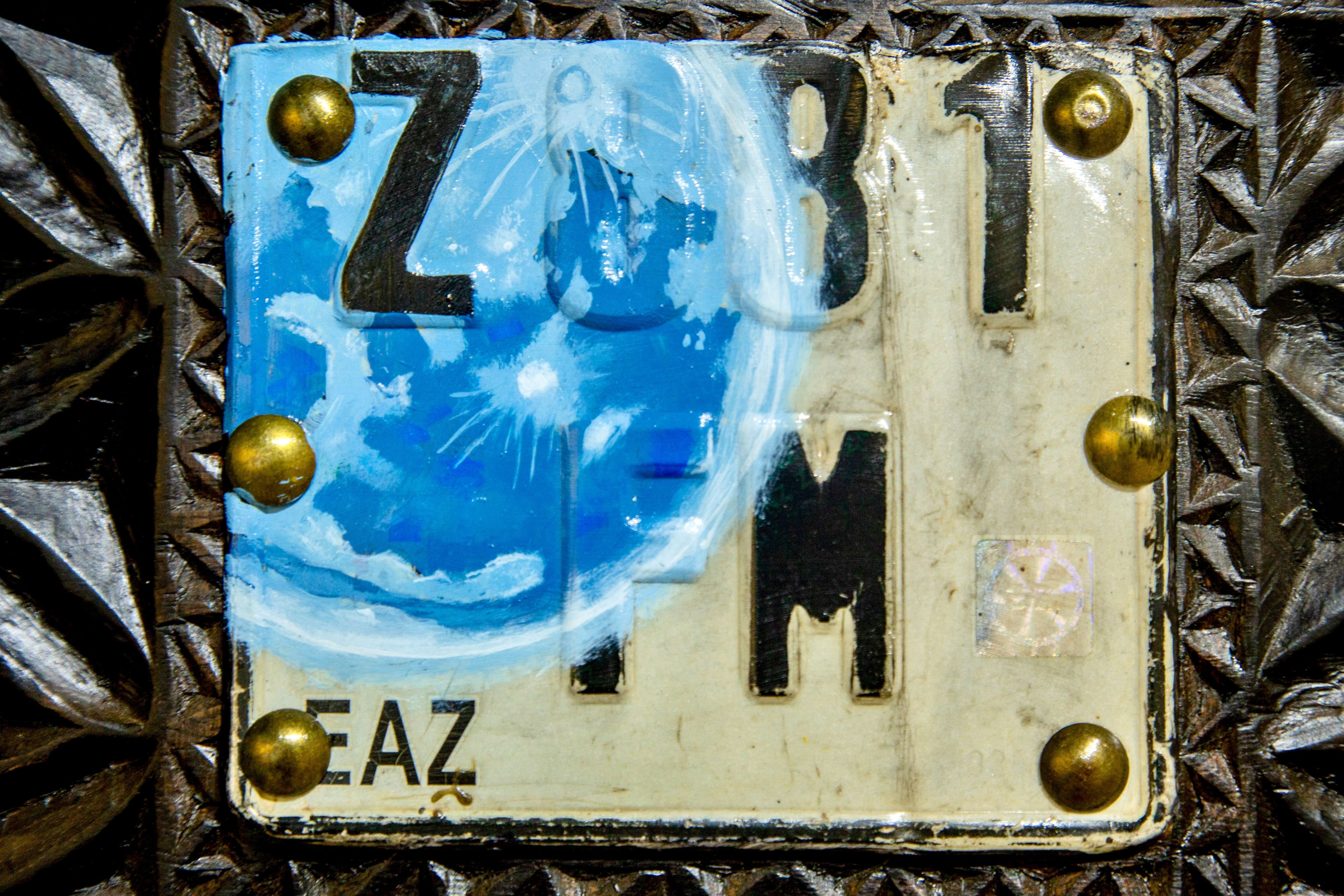
Zikusanze exhibition, 'Enamba yo eliwa-where is your number plate?' Credit: Vodo, 2025
Omanyi enamba yo (do you know your number)?
Wamala rolls out the friction in hoisting home, as he mounts food preparation on the pendulum blows of hustling to punch the bag in the global arena. The hustler is reminded to keep a count. Take accountability of their instance and existence.
Where is your number plate?
The artist Wamala, mesmerized by his own introspection, battles the notion of zikusanze in a bid to escape the boxes that seek to categorize a human’s existence. The pursuit of number plates, a sense of stature, belonging, a means of placement in one’s reality. This pursuit finds the artist intrigued to play on the symbolisms of status and class, as invoked in our chase of a number plate to count one’s social position.
Busy in discussion at the exhibition opening, a friend and I stumble upon the punching bag installation. The artwork Matooke in Kumasi bears the lady in a kind, quiet, calm breath. This is home to her. This activity of peeling matooke embodies home. This is her ‘hello’, it is her space on the food chain. Here, she serves what her hands personally peel.

Wamala's “Matooke in Kumasi” served like a boxer sits in his fists. Credit: Vodo, 2025
As the woman cradles her position on the number-plated punching bag, each finger of banana is prepared to its utmost end, to fortify her children or her husband or the neighbors by the trade center. This is her arena. For this moment, her position can be found here. Her coin is found here. This is her spot, in this exhibition, hanging from the ceiling; of a shopping mall. She sits into her serving like a boxer sits into his fists. It’s her turf. The beholder decides if it’s for punching or fortification.
Arenas for art
Vodo has curated a knack to host experiential exhibitions where art works are set up within spaces that amplify their message by playing necessary background. This time, the exhibition was set in a city shopping mall that invites audiences to face social shadows. With vivid themes of consumerism and hustle, it is almost too intense to see the friction while in a moving market space that is a shopping mall.
Collectively, we amass beyond our needs and insist on necessary luxuries. Art though, behind see-through ceiling-to-floor glass walls, still asks one to stop. See the discomfort to then arrive at a resolution.
What do we chase? The curator asks as we chat.
Why do we consume? She reiterates
Usually, consumption is a gratification side of hustle. We hustle hard to consume consistently. These two mirrors hold to the audience a questioning on ‘the chase’. Those passing through the mall on their busy chase of the coin or the consumption are beaconed by art. To feel within the whirlwind, even if for a minute. This minute is the release.
Glimpse into artistic perception
The curatorial story in this exhibition is an immersion into the chaos of modern survival. While pursuing a coin or financial status and an insatiable numbing of consumption, we take to amassing and amassing till we are run over. For the curator, she finds that this is a necessary discussion at a time of growing consumerism.
The artist Kikomeko draws a colonial protest from impositions of consumerism and mass production. Here, basing on colonial education, ideas of home begin with the imagination at two windows by a door. Kikomeko uses this symbolism to host the outpour from mass production as ‘tadooba’ characters run rampant. Tadoobas, luganda word for paraffin lanterns, are remnants from colonial Uganda as sources of modern light. Today, as in this exhibition, the lanterns made from scrap metal outflow into suffocation.
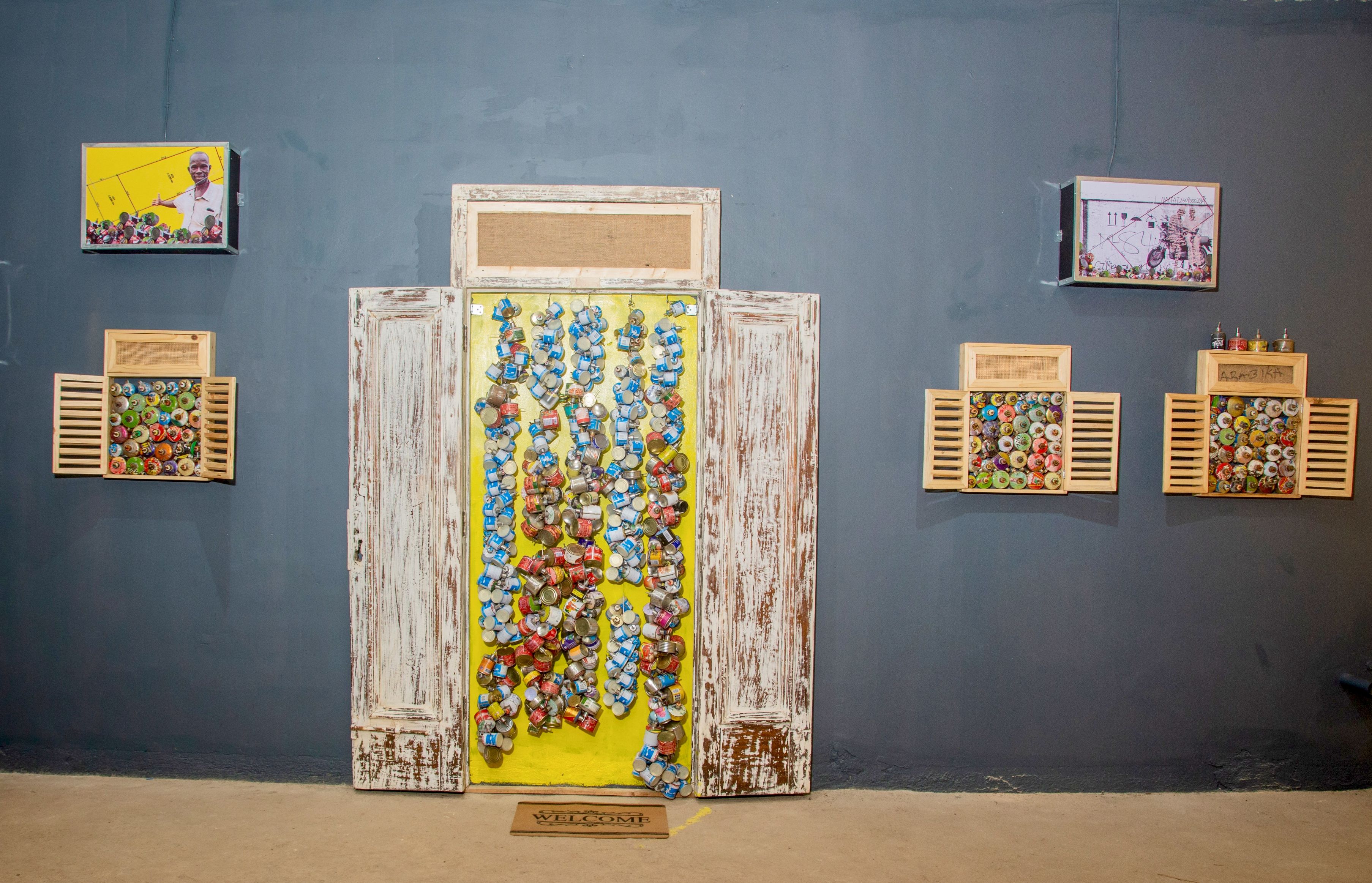
Kikomeko's “Fragments of Our Memories”, a sort of colonial chaos. Credit: Vodo, 2025
A house window illustrates the flow of energy outward. However, in this context, the window isn’t seen as a space to bring fresh air into the home. Instead, openings release the consumption we suffocate under. This is depicted in artworks like Fragments of Our Memories, Open Gates, as the artist insists we meet the ‘tadooba’ before it illuminates light in our homes. Here, in this exhibition, the metal scrap material piles like garbage falling out of entry ways and in the closets where we stack what we forget.

Kikomeko's 'Tadooba' curtains. Credit: Vodo, 2025
Chances of a butterfly effect
Wamala’s artwork “Sleeping Giants 1”, draws me into a quiet trance. This is a sensitive exploration, a hushed whisper to awaken, a moment to count rest or count on rest!
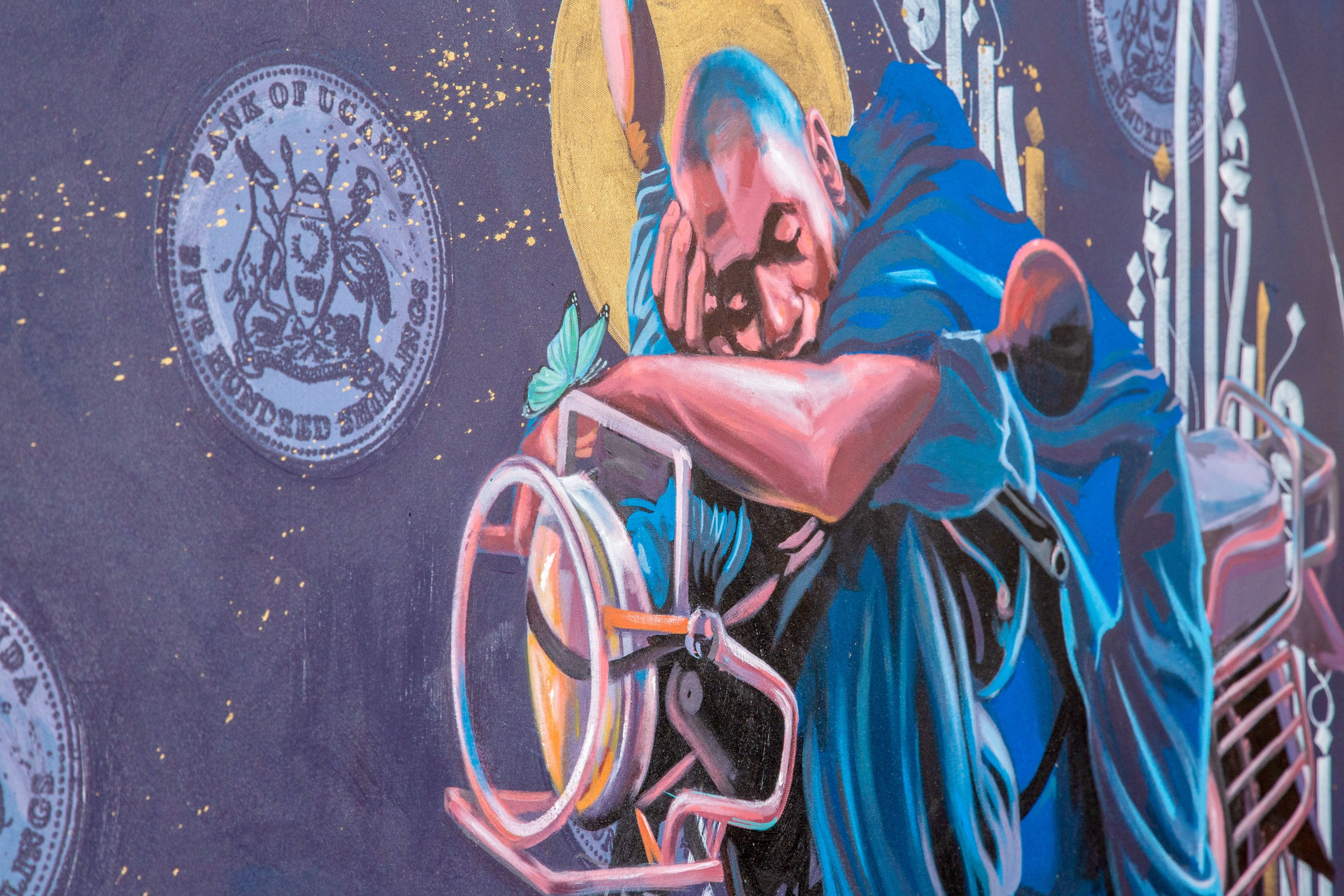
Wamala's "Sleeping Giants 1". Credit: Vodo, 2025
From this exhibition, the audience must consider a resolution. Consider that it takes a nap sometimes, from the afternoon sun, to hustle on city roads that bend and scatter the coin. That is the toil and this is the harvest of the toil. A moment to rest from a bargaining passenger or loop out of the discontent from a low paying passenger.
While in the nap, thereon his hand, a butterfly rests. It finds a still spot. The place to take its moment of rest, the place to start a new flap of its wings. Both rest and pray. Hoping that when the butterfly takes off, its flap will sprinkle coin glitter for the hustler. Out of the trance, Wamala snaps me back noting that the character is ‘standing on business’ and around him time draws a darkness onto his light. Still, hustling insists on rest as one charges forth in their toil.

Wamala's “Green Dream”, to wake early in the morn and stay long nights. Credit: Vodo, 2025
The toil calls the hustler to the land of ‘green dreams’ and mass markets. This is the call to the big city dream. A chance of hope. The void of hope. Awakened dreams. The night shifts. The morning rise. The hustler scatters and the search goes and goes.
Wamala draws the audience to the universal hustle and bustle which hosts alters of consumerism with corresponding cares in dreams that haunt us with multiplication. To get the coin playing like a roll of dice, do you wake in the morn and stay long nights?
“The coin surrounds the working men because they are dreamers” Wamala explains.
In his exploration, Wamala advises the hustler that “we are sleeping on our own resources”. This exhibition set in a shopping mall is a means to wake audiences up! “Why wait for bigger things when you have this that you have?” the artist uses a questioning motif to interrogate contentment and what fulfils a hustler.
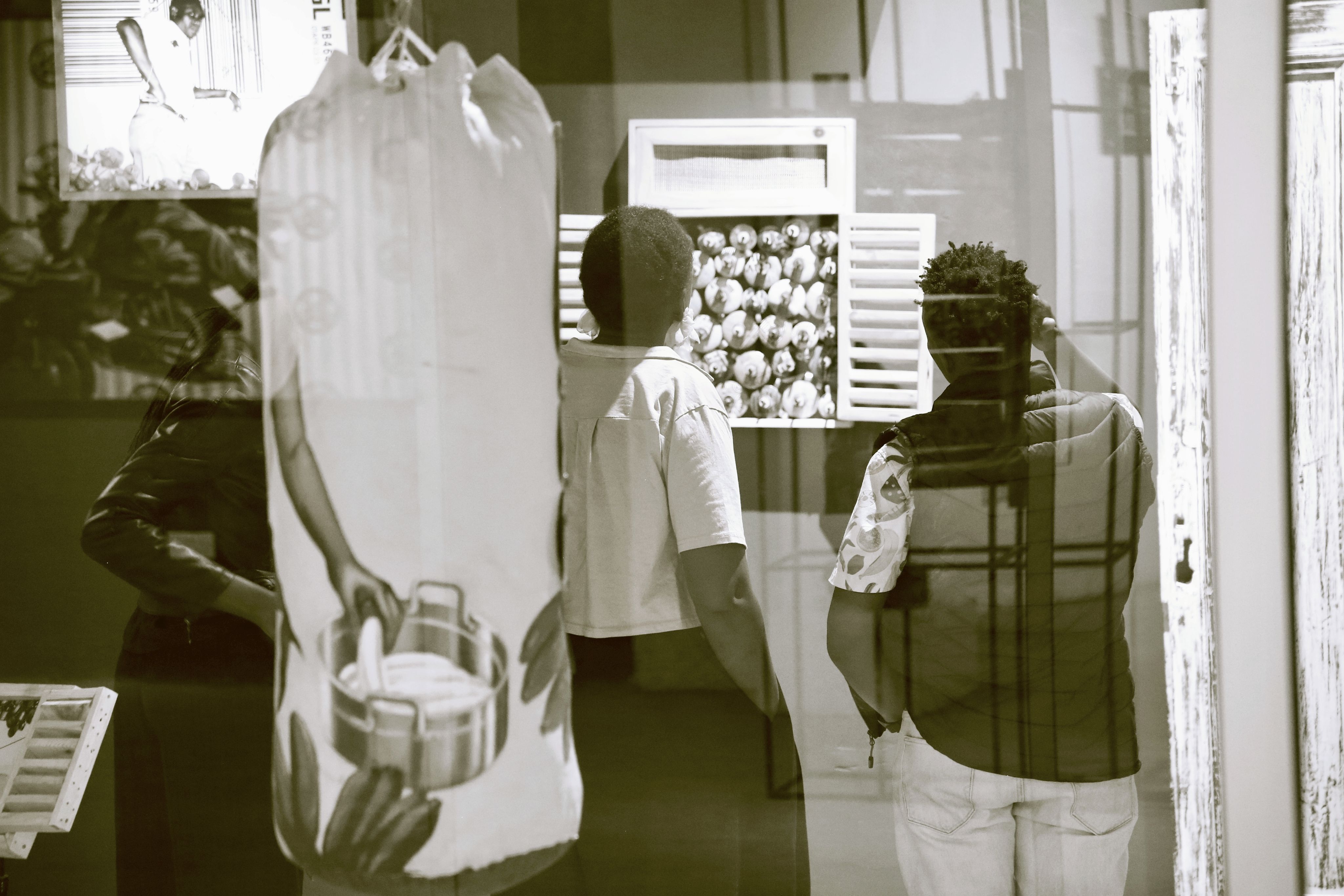
Audiences at Zikusanze exhibition, looking through glass walls. Credit: Vodo, 2025
Art community gathers in an art moment
These moments of exhibition staging hold communal elements. Discussions and debates. Trades in knowledge. Empowerment of shared consciousness. Here, at the exhibition, art invites all fashions. The brown squad (coven should be the word really), the full blacks, the rainbow stripes, the monochrome notes and the popping hues.
The metroplex mall lounge, for this moment of art, functions as the home ground where old friends muse and art critics debate; while the observers and students critically hover and infiltrate spaces. Here the conversations are both hushed and critical yet loud and reverent. It is necessary to listen close.
The art community shows up. Kikomeko steals away a sneak peak “do work guys, do work. Do art”. For one in the audience, the artists capture the intersection between homestead and workplace. And for another, the artists capture a hypnosis in numbing cultures of excessivism.
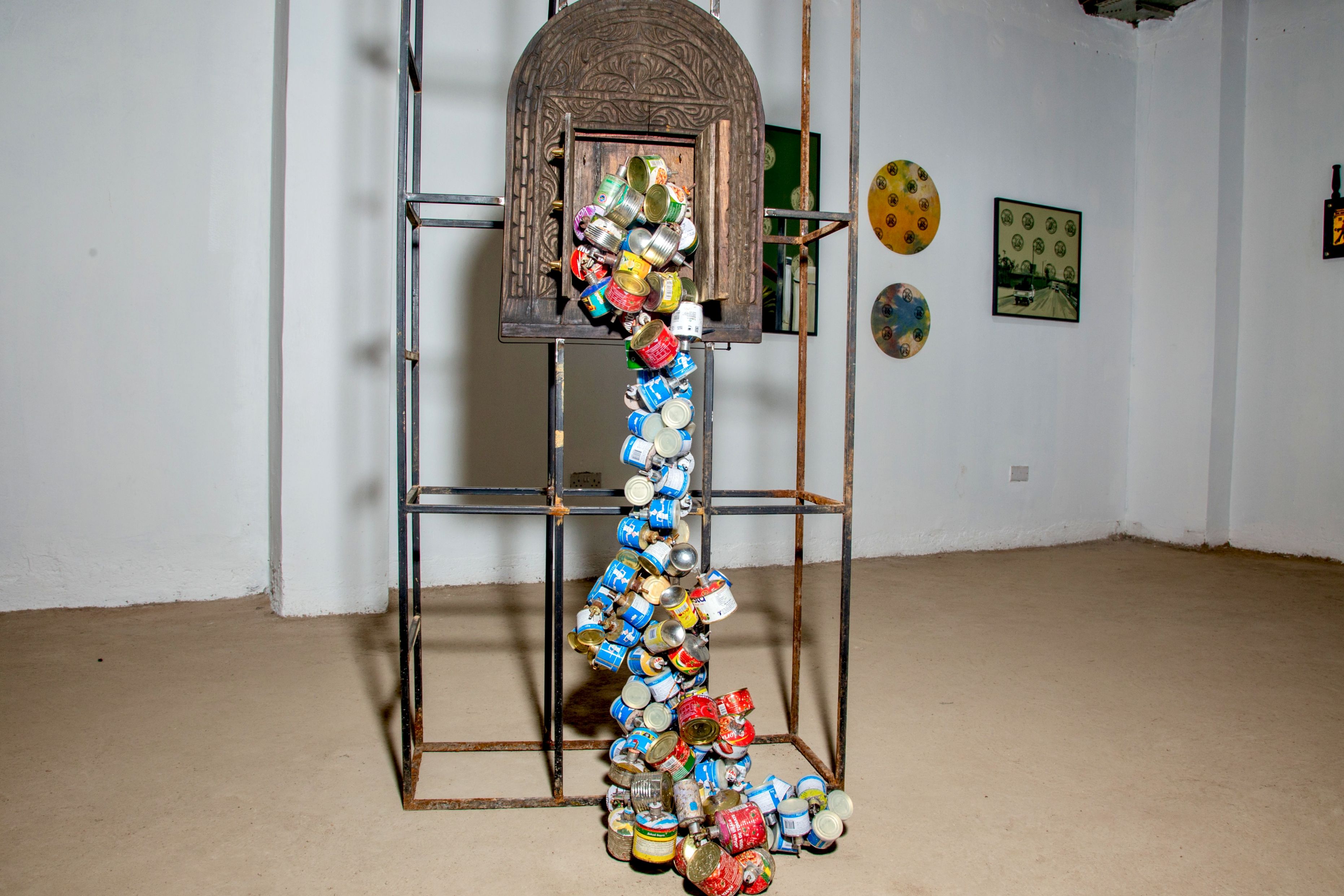
Kikomeko's "Fragmets of Our Memories", the overflow runs to the floor. Credit: Vodo, 2025
This art exhibition calls us to stop for a moment. The juxtaposition of its setting and materiality is that in a city shopping mall, business and busy-ness must go on. But, like the rider taking a nap from his hustle, audiences too need this art moment. In the end, which side of the coin are you rolling on: consumerism, hustling, both? Do you stop to breathe, does it matter, will it matter? Is there another choice? Remember, “Zukusanze if you do, Zikusanze if you don’t”!

